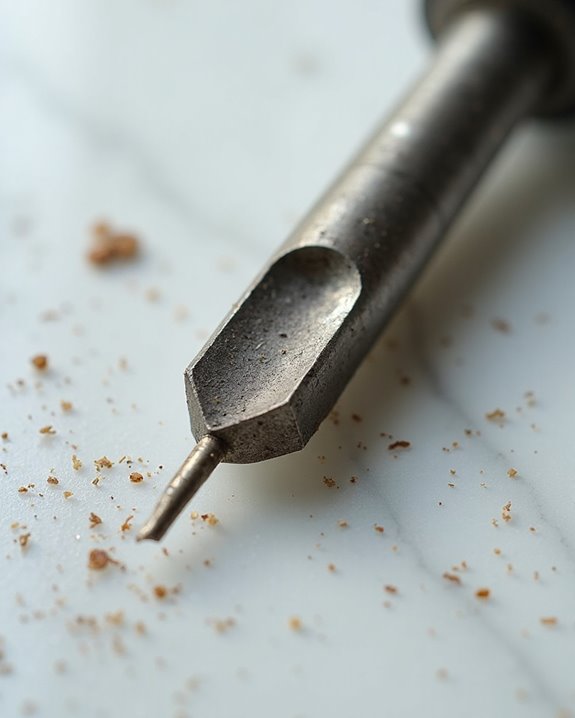Nail drill bits vary greatly in lifespan based on their composition and usage patterns. High-quality carbide, diamond, and ceramic bits typically last between 150-300 services when properly maintained. Single-use sanding bands require immediate disposal after each client for hygiene purposes. The durability of nail drill bits depends on factors including application type, pressure applied, cleaning regimen, and operating speed. Professionals should monitor for decreased efficiency, excessive heat generation, and visible dulling to determine when replacement becomes necessary. The following details explain how to maximize your bit investment.
Key Takeaways
- Carbide, diamond, and ceramic bits typically last 150-300 services with proper maintenance.
- Sanding bands are single-use items that must be replaced after each client for hygiene reasons.
- Nail drill machines generally function from 1 month to 1 year depending on maintenance.
- Replacement is needed when bits require increased pressure, generate excessive heat, or show visible dulling.
- Service type significantly impacts longevity, with acrylic removal causing faster wear than gel polish application.
Understanding the Lifespan of Different Nail Drill Bit Types
The lifespan of nail drill bits varies greatly across different types, making it essential for nail technicians to understand these variations for ideal performance and cost-effectiveness. Sanding bands used with mandrel bits represent the shortest-lived option, designed for single-use application before replacement to maintain hygiene standards during nail services. In contrast, carbide bits offer substantial durability, typically lasting through 150-300 services and excelling at removing tough acrylic nails due to their steel-surpassing strength. Diamond bits, despite being the hardest available option, generally match the carbide bit lifespan of 150-300 services but may deteriorate faster from friction-generated heat during intensive use. Ceramic bits similarly endure through 150-300 applications without excessive heating, making them ideal for repeated gel nails procedures. Overall, nail drills maintain functionality from one month to one year, depending on maintenance practices. Investing in high-quality sets, such as those featuring diamond carbide bits, can significantly extend the overall lifespan of your nail drill accessories.
Factors Affecting Your E-File Bit Durability

Several critical factors impact the longevity of nail drill bits, transforming what could be a year-long investment into a monthly replacement expense. The type of service performed greatly influences durability, with bits used to remove hard products like acrylics wearing faster than those used for gel polish application. Fine grit bits typically require more frequent replacement when regularly employed for product removal, as the abrasive surface deteriorates with continued use.
The nail tech’s technique plays a vital role, as excessive pressure and improper speed settings accelerate wear on electric nail equipment. Additionally, the materials bits are made from determine their resilience—carbide and diamond bits generally outlast ceramic options when properly maintained. Professional nail technicians can extend bit lifespan through regular cleaning after each service, preventing product buildup that compromises effectiveness. For enhanced durability, choosing bits constructed from tungsten carbide is highly recommended due to its superior strength and longevity in demanding applications.
Signs That It’s Time to Replace Your Nail Bits
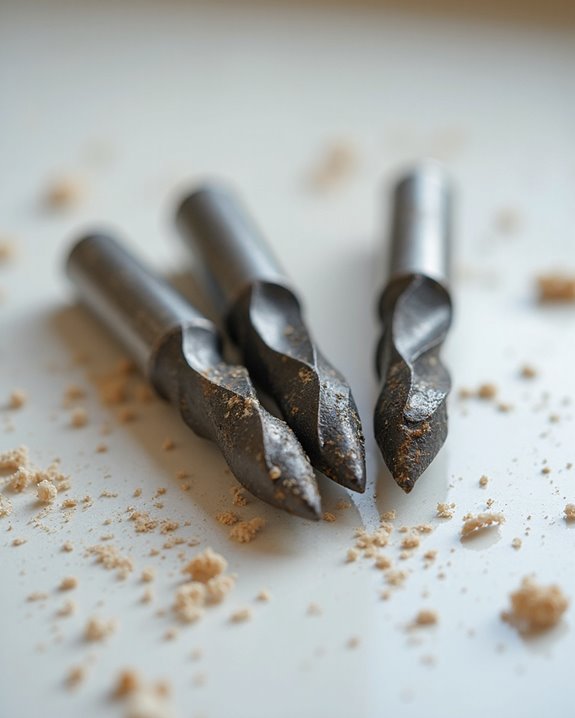
Recognizing when nail drill bits have reached the end of their useful life requires attention to subtle performance changes during regular nail services. Professional nail technicians should monitor how their carbide metal bits interact with enhancements, noting when bits require increased pressure or higher speed settings to remove products effectively. When a nail file or drill bit that once performed efficiently begins producing more heat or dust without delivering the same results, replacement becomes necessary.
Nail drill bits come with an expected lifespan, but gradually diminish in effectiveness over a long time. Technicians should replace bits when they no longer remove acrylic or gel enhancements smoothly, take longer to complete routine tasks, or require adjustments to prevent damaging the natural nail beneath. Maintaining sharp, efficient tools guarantees consistently professional results. To maximize the longevity of your nail drill bits, incorporate regular cleaning into your routine to prevent buildup and extend their effective lifespan.
Maintenance Practices to Extend Bit Longevity
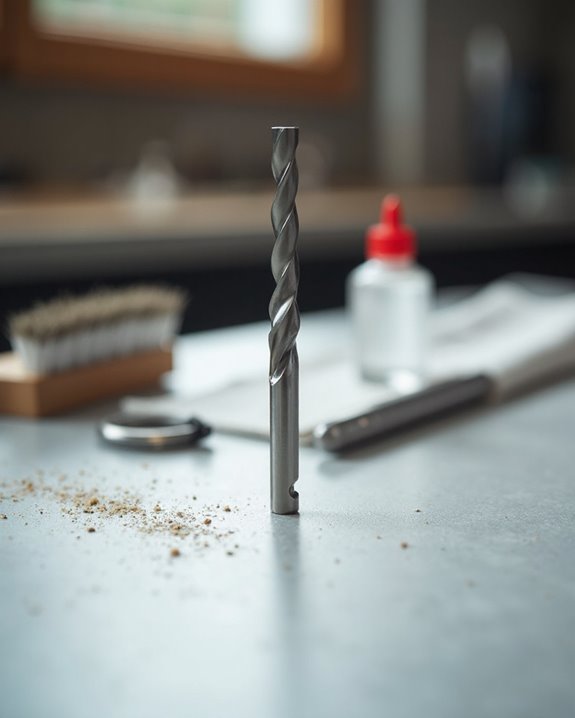
Proper maintenance practices greatly extend the functional lifespan of nail drill bits, transforming them from disposable tools into long-term investments for nail professionals. A thorough Guide to Nail Drill bit care involves thorough sanitization after each client, including pre-soaking in acetone followed by disinfection and UV sterilization. Different types of nail bits require specific attention, with metal or rubber mandrels needing immediate disposal of single-use bands to prevent contamination. When bits made of metal are used on natural nails, operating at ideal speeds within manufacturer guidelines substantially reduces wear, allowing carbide and ceramic bits to last through 150-300 nail treatments. Professional nail technicians should make sure bits are completely dry after cleaning, particularly for metal components, and should select appropriate grits for specific Nail Tools applications, avoiding carbide options on natural nails when unnecessary.
Material Matters: How Bit Composition Affects Lifespan

The composition of nail drill bits directly influences their functional lifespan, creating significant differences in durability and performance across various materials. Carbide bits, made from metal 20 times stronger than steel, typically last through 150-300 services, making them excellent for nail surface work that helps remove old nail polish efficiently. Diamond bits, constructed from nature’s hardest materials, resist rust and withstand high friction during perfect manicure creation, often outlasting other nail products by maintaining effectiveness through multiple sessions. Ceramic bits, with their heat-resistant properties and distinctive flute-like cuts, can be repeatedly cleaned and sterilized, supporting extensive nail art applications without significant degradation. Meanwhile, mandrel bits primarily serve as holders for disposable sanding bands used for nail preparation, with the metal component typically outlasting the single-service bands they support.
Usage Habits That Wear Down Bits Prematurely
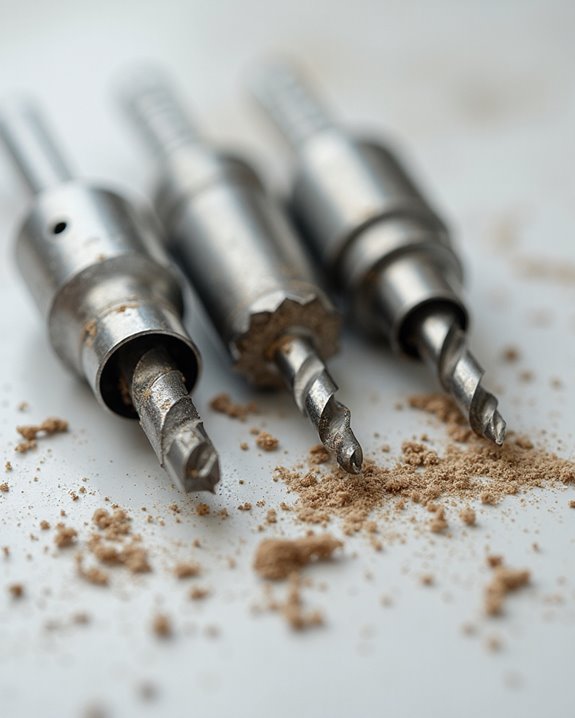
Nail technicians frequently accelerate bit deterioration through preventable habits that compromise both performance and longevity. Operating tools at higher speeds than recommended generates excessive friction and heat, potentially reducing bit lifespan from years to mere months. Inadequate cleaning and sanitization after each client allows product buildup that dulls bits prematurely, cutting effective use from hundreds of sessions to dozens. Applying excessive pressure during filing forces bits to work harder against resistance, particularly when addressing multiple nail layers or thick enhancements. This unnecessary strain causes faster degradation of the bit’s cutting edges. Proper bit matching is equally critical, as using fine-grit bits on heavy enhancements or coarse bits on natural nails creates inefficient operation patterns that wear down materials rapidly. These common practices greatly diminish the standard 1-month to 1-year service expectancy.
Professional vs. DIY Use: Expectations for Bit Replacement
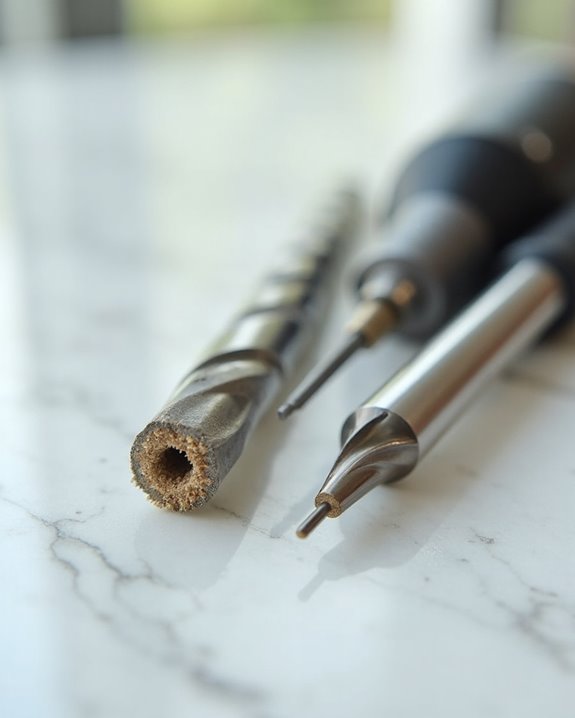
Although both settings employ similar tools, professional nail technicians and DIY enthusiasts experience dramatically different lifespans from their nail drill bits, with replacement schedules varying greatly between commercial and personal environments. Professional technicians typically replace their bits every 1-3 months or after 150-300 services, necessitated by high-frequency use across multiple clients with varying nail conditions and products. The rigorous daily sanitization procedures, coupled with exposure to diverse nail products, accelerate wear and demand more frequent bit replacement to maintain hygiene standards.
DIY users, however, can expect a substantially extended lifespan of 6-12 months for their nail drill bits, as personal use involves fewer applications, less product variety, and lower operating speeds. This reduced wear pattern allows home users to maintain functional bits longer, requiring replacement only when visible dulling or decreased efficiency becomes apparent.
Frequently Asked Questions
How Often Should I Replace Nail Bits?
“All that glitters isn’t gold” in bit longevity. Technicians should conduct routine inspection every 150-300 services, prioritizing bit cleaning and safety measures. Material selection affects frequency, with proper maintenance ensuring cost efficiency without rigid brand recommendations.
How Often Should I Replace Drill Bits?
Proper maintenance schedules for drill bits involve regular durability checks to monitor wear patterns. Replacement timing varies from 1-12 months, depending on usage limits. Tool longevity increases with consistent sharpening frequency and proper breakage prevention techniques.
Do Nail Drill Bits Get Dull?
Nail drill bits do dull over time. Wear causes include friction sources during usage, material effects, and heat factors. Dull indicators include decreased performance, while proper storage methods and bit sharpening can extend their effectiveness.
How Long Should a Nail Drill Last?
Time flies in the beauty industry! A quality nail drill’s lifespan ranges from 3-10 years depending on motor longevity, usage duration, and device care. Regular maintenance enhances wear resistance, extending battery life and providing excellent durability.

